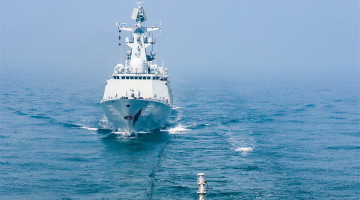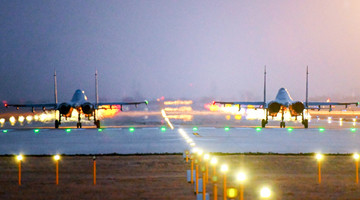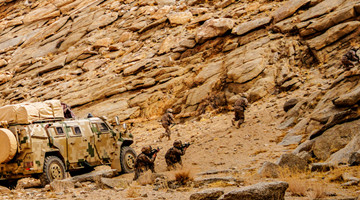By Zhang Yuan
The North Atlantic Treaty Organization (NATO) recently issued the Joint Air Power Strategy that lays out the path of future air power development for the organization. The eleven-page strategic document including 54 articles is quite general, but the individual articles express NATO’s current concern and the direction of future reinforcement.
The document acknowledges that the NATO Air Power may no longer have air superiority in complex environments, and also emphasizes the establishment of cyber force combat capabilities in order to better deal with potential attacks.
Difficulty in maintaining air superiority
NATO’s Joint Air Power Strategy is the first of its kind since NATO was formed in 1949. The strategy consists of 21 parts, of which “the security and operating environment” is an important part spelling out the challenges faced by NATO’s air power.
The document states that “the Alliance is faced with threats and challenges, from state and non-state actors, military forces, terrorism, as well as from hybrid attacks and cyber-attacks, which are more diverse, complex, rapidly evolving and demanding than at any time since the end of the Cold War”.
“As a result, the future operating environment may be one in which air superiority can neither be assured at the onset of operations nor, once obtained, be an enduring condition,” the document says.
It is rarely to see such a public statement issued by NATO acknowledging its concern over control of the air superiority. Some western media analyzed that “NATO’s uncontested air operations days over the sky of Afghanistan, Libya and Yugoslavia are coming to an end.”
NATO spokesperson Oana Lungescu expressed that the Air Power is NATO’s core military force and has helped NATO achieve many political objectives in history. In face of the fast changing world, the Air Power Strategy is to ensure the allied air forces to “remain world class”.
Cyber-attack and defense coordination
Network and information security are discussed in 13 out of the 54 articles of the strategic document. The document envisions that its 29 NATO member states must enhance cyber-attack and defense coordination and cyber force training to improve NATO’s cyber security.
“In the future, the successful use of Joint Air Power (JAP) will be more dependent upon a robust and securely networked environment…The systems...need to be included in prevention, detection, resilience, recovery and defense from all forms of cyber-attack,” states the document. “The effective integration of Cyber into JAP operations will leverage the Alliance multi-domain approach.”
Analysts believed that although the document mainly discusses the air power strategy, it’s not hard to see NATO’s effort to establish a coordinated cyber force.
In May, NATO Secretary General Jens Stoltenberg called on the member states to include cyber-attack as part of a NATO’s mutual defense clause, which means that a cyber-attack against any member state would be considered a military attack against the whole NATO.
NATO-Russia relations
NATO’s Joint Air Power Strategy doesn’t use a word like “imaginary enemy”, but signs of hostility toward Russia can be read between the lines.
According to some analysts, the document states that the air power must have the capabilities to operate in well-defended or congested air space, which refers to Russia’s enhanced military capabilities.
Russia has deployed naval and air forces in the Baltic Sea, Crimea of the Black Sea, and Syrian cities Tartus and Latakia on the east bank of the Mediterranean Sea, which are the deterrent factors against NATO.
The Joint Air Power Strategy was released in English and French as well as Russian and Ukrainian on the NATO official website.
Disclaimer: The author is Zhangyuan, reporter with the Xinhua News Agency. The article is translated from Chinese into English and edited by the China Military online.The information, ideas or opinions appearing in this article are those of the author and do not reflect the views of eng.chinamil.com.cn. Chinamil.com.cn does not assume any responsibility or liability for the same. If the article carries photographs or images, we do not vouch for their authenticity.









